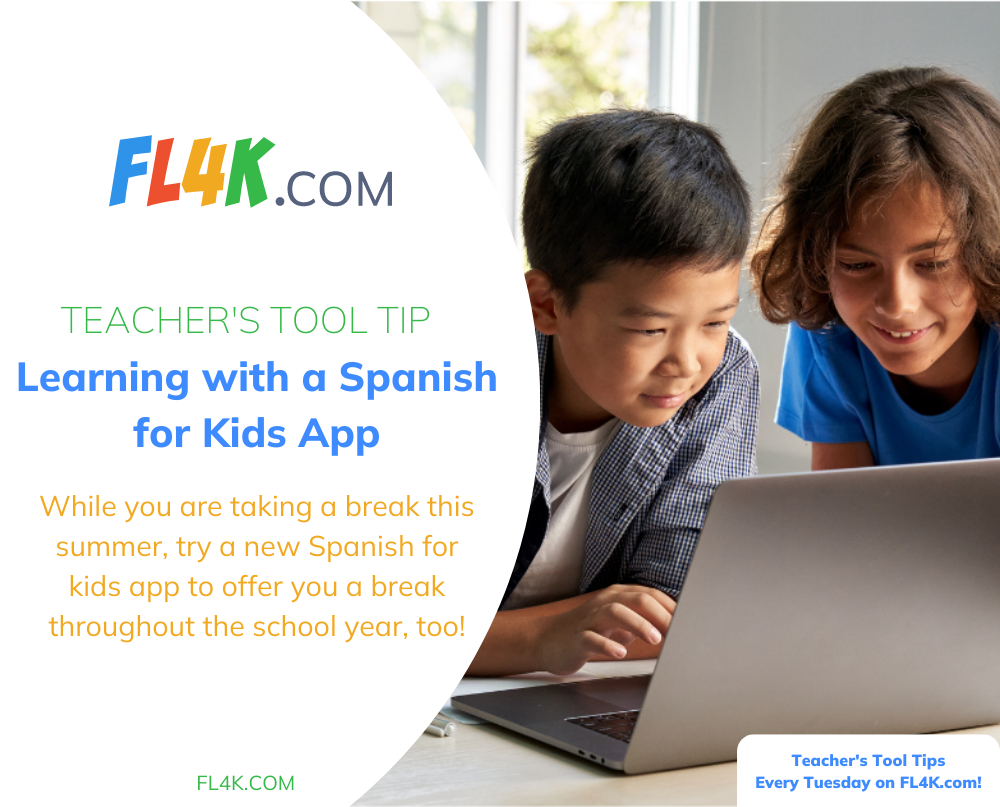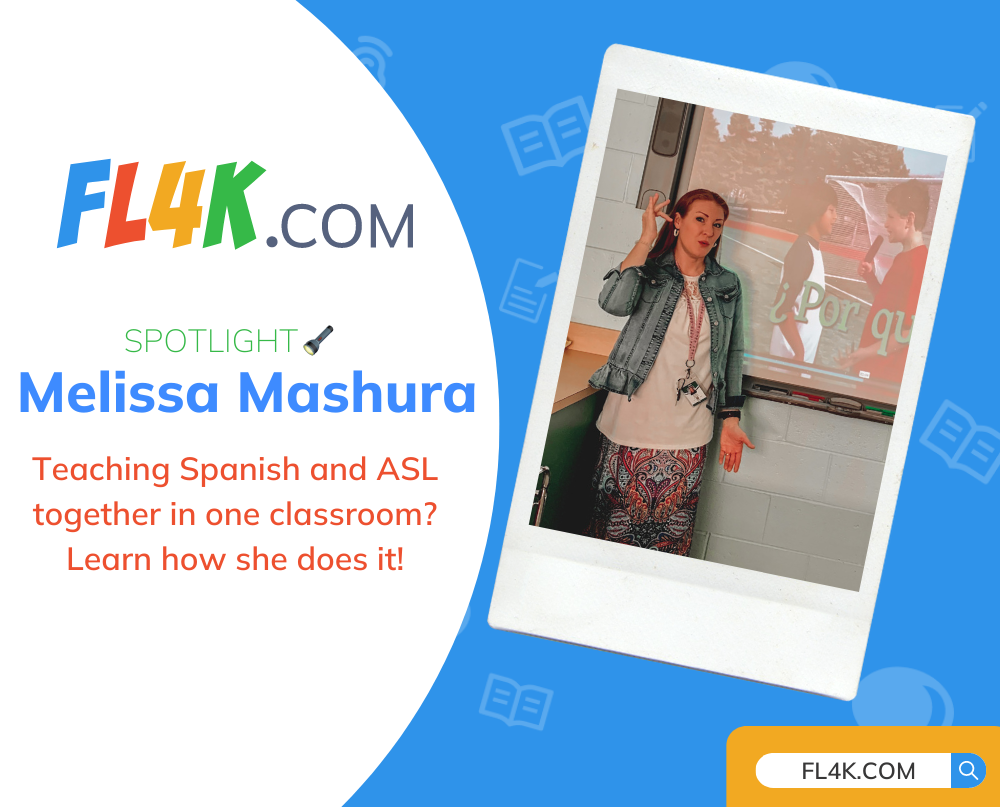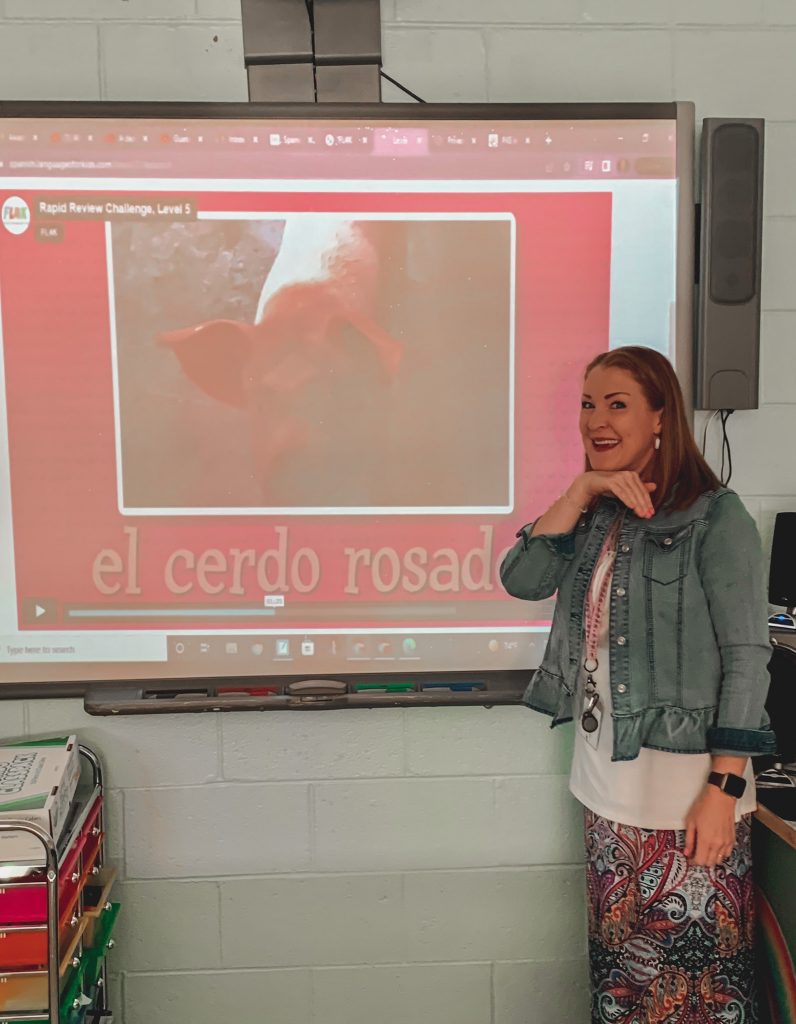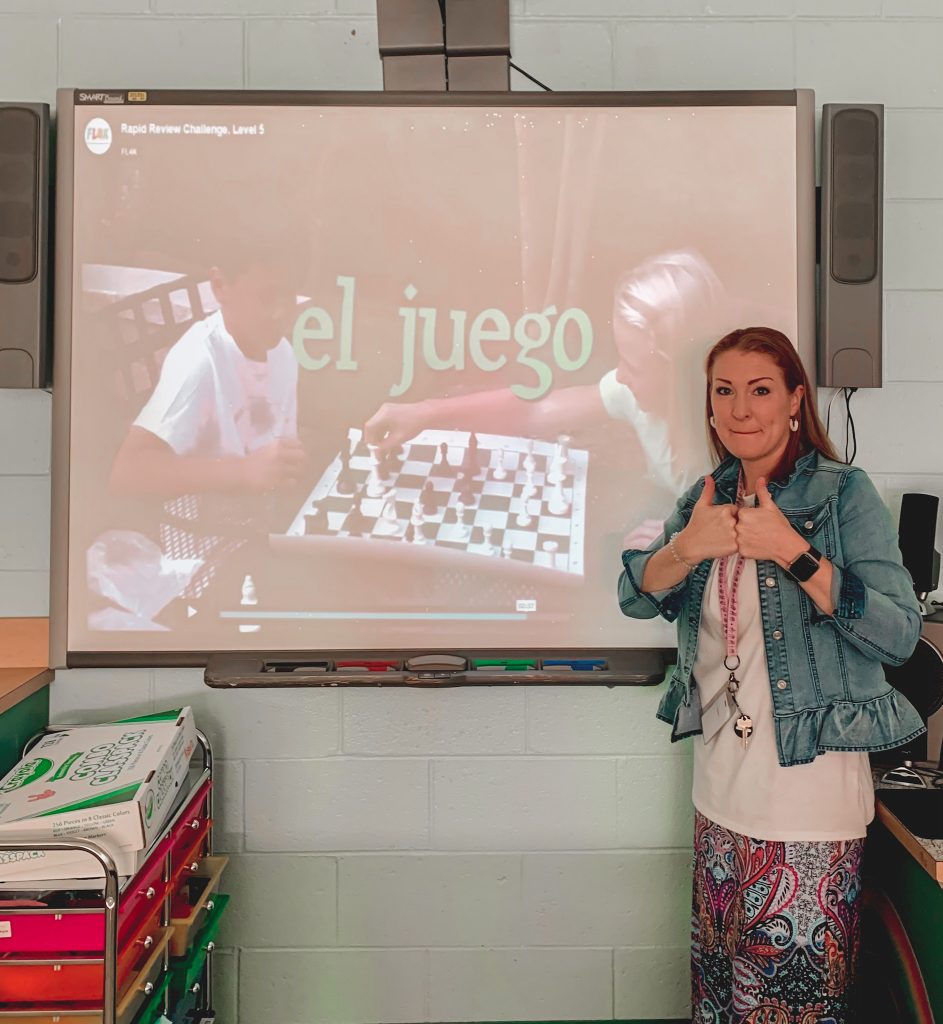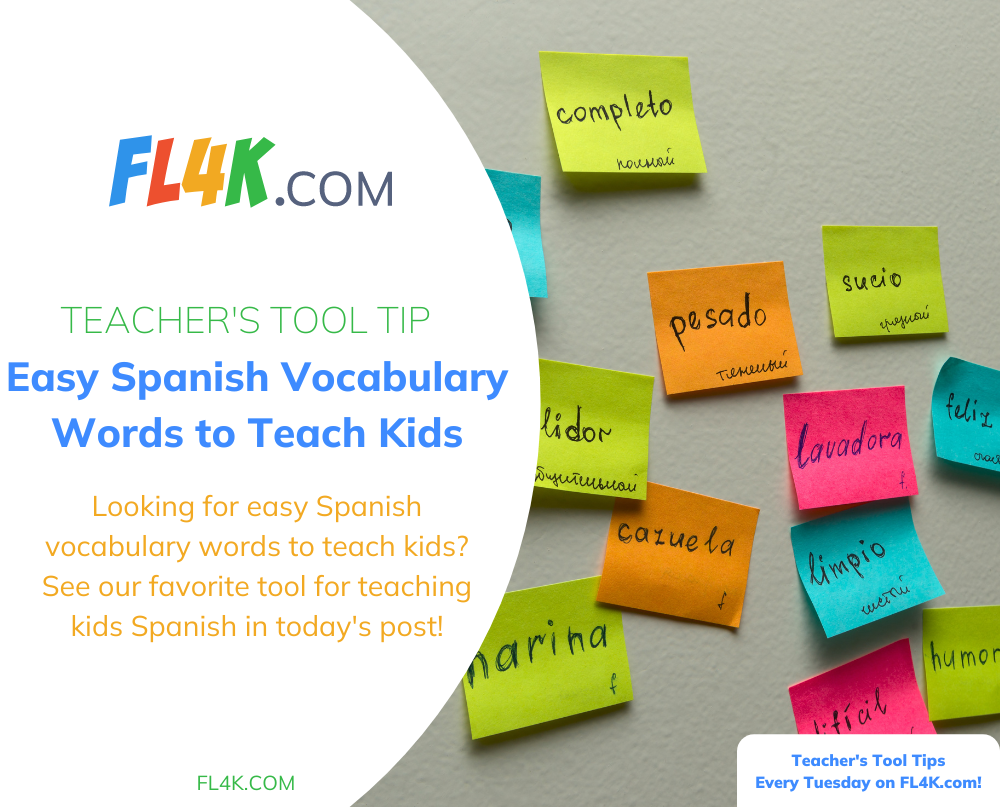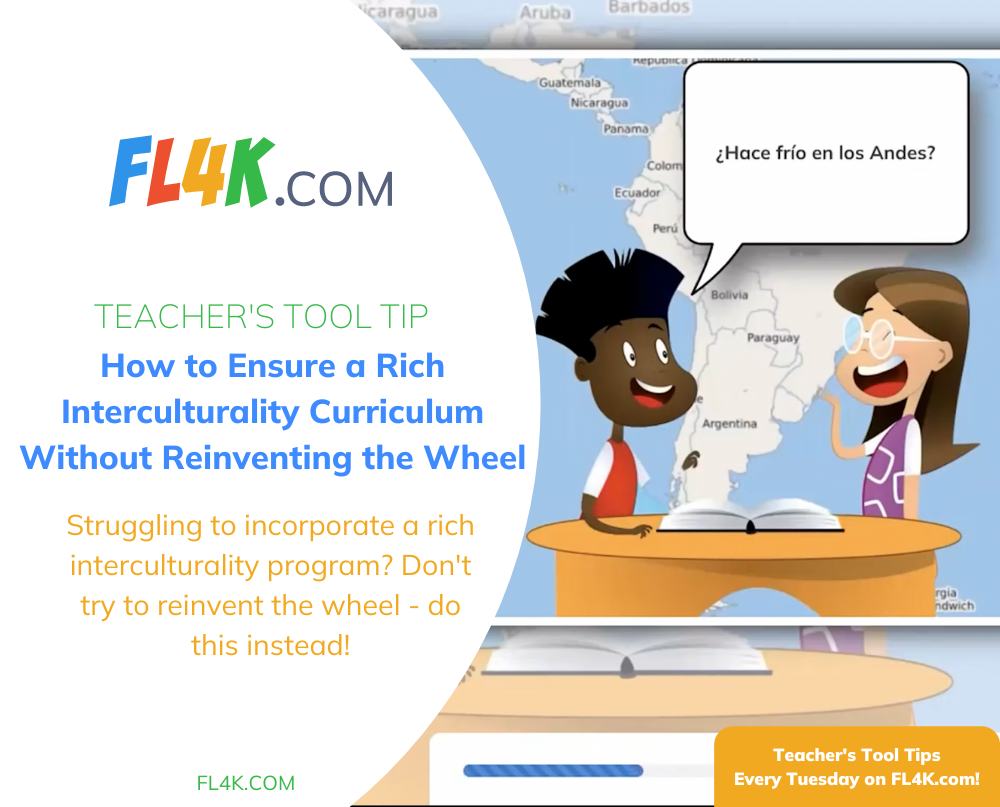Teacher Tooltip Tuesday: While you are taking a break this summer, try a new Spanish for kids app to offer you a break throughout the school year, too!
It’s summer, and you are on vacation by now, hopefully! Time to take a break! A break is exactly what I invite you to consider in your curriculum planning for next year! Take a look at the features of a state-of-the-art Spanish for kids app called FL4K, to ease your workload and engage your students in learning Spanish in a challenging, engaging, and extremely innovative way.
Why choose FL4K?
There is no program that will supplant the importance of the teacher that reinforces the concepts taught online with hands-on activities, projects, pair activities, etc. Students always need a variety of activities to practice the real-world language skills that they will be learning with this Spanish for kids app.
Nevertheless, FL4K, a Spanish for kids app, includes Spanish games specifically designed to build language proficiency, dialogues with built-in language lab features, practice questions with images, audio, and instant feedback to delight kids and reinforce learning!
Cultural Activities
This Spanish for kids app also includes a culture program that teaches students about eight different Hispanic cultures using carefully scaffolded language structures that build language proficiency.
The app allows students to progress at their own rate, reading and listening about all the fascinating points of interculturality designed and developed by a team of teachers with over 100 years of combined experience in the classroom.
Students will discover interesting facts about the geography and climate, people, sites of interest, native animals, foods, indigenous groups, global challenges, etc. of each culture.
Culture and Language Learning Together
While they are learning about Hispanic culture, they are being challenged to build their language proficiency skills. Instead of learning Spanish in a vacuum, students are learning about cultures and language at the same time. The language learning is so subtle and natural that the students aren’t even aware of how successfully they are building language proficiency.
Three levels into the program, most of the language is in the target language because of how practical language is so carefully and repetitively embedded in the program.
We are a dedicated group of teachers and techies working to provide you with a Spanish program that has done all the hard work for you: we put all the resources that you and your students need into a single platform at your fingertips, plan lessons so you won’t have to, and provide the flexibility to teach however works best for you!
We want you and your students to be excited to start Spanish class in the fall with renewed ideas for how to make learning fun and much easier on you! Take a look and let us know what you think!
